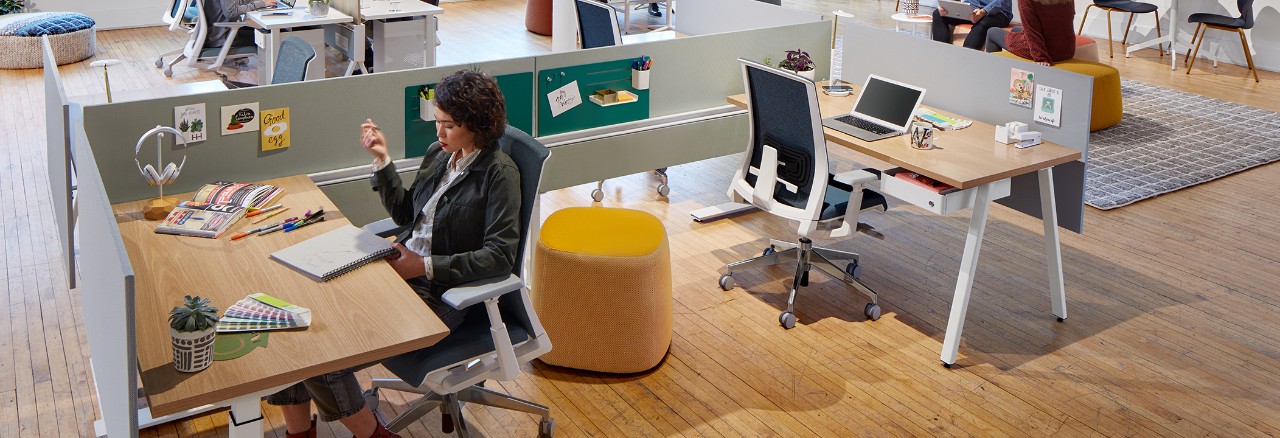As employers grapple with rising healthcare costs, one area often overlooked as contributing to employee health and well-being is the workplace, itself. Aside from lunchtime yoga and salads on the cafeteria menu, the approach to well-being at work often fails to look at the bigger picture and address the underlying issues that contribute to poor health: a sedentary lifestyle and work-related stress.
“We spend 90 percent of our lives enclosed within one sort of a building or another, and until recently there has been little attention on how to make buildings healthier.”
— Dr. Michael O’Neill, who leads Haworth's Workplace Research and Strategy
So how can a building make people healthier?
Nudge Better Behaviors
With training in psychology and architecture, Haworth’s Dr. Michael O’Neill has spent decades researching the connection between buildings and worker health and performance. O’Neill advocates for a combination of “nudges” and “microcontrols” that help employees make better decisions.
“A nudge is never about taking choice away from somebody. It’s about making the best choice—the obvious and easy choice,” O’Neill says. One way to nudge people to make a healthier choice is by encouraging them to ditch the elevator in favor of climbing stairs. A Harvard study found that taking eight flights of stairs a day lowers average early mortality risk by 33 percent. “The key is making the staircase a central element in the building, so people are drawn to take the steps,” O’Neill says.
Reduce Stress Levels
Beyond movement and healthier choices, the interior design of a building can play a role in reducing stress, the single biggest enemy of well-being. A person’s body reacts automatically to stressful events, like deadlines and production pressures, by releasing hormones into the bloodstream. The most dangerous is cortisol, part of the body’s natural fight-or-flight mechanism. Elevated cortisol levels are tied to a host of health issues, from heart disease to lower cognitive abilities.
“What’s sort of ironic is that you go into work and you have these pretty sedentary jobs. We dress nice, we drink coffee, we chat and have meetings all day. It seems really harmless. It's not like 100 years ago when most jobs were in farming or industrial settings like factories or coal mines, but it’s equally dangerous. And the thing that makes it so dangerous is that work stress is so invisible,” O’Neill says.
Providing opportunities to connect to nature in the workplace can help. Studies have shown that taking at least 20 minutes out of your day to stroll or sit in a place that makes you feel connected with nature will significantly lower stress hormone levels.
Give Employees Control
Research has shown that an additional way to reduce workplace stress is to give people control over their physical workspace.
At the individual level, it can involve letting people choose a space for the task at hand, so they can do their best individual work. It can be as simple as providing furnishings that can be moved up, down, and around to adjust to someone’s body or workstyle. Giving workers power over small adjustments in their individual work environment ultimately allows them more control over their work process.
At the organizational level, create policies and a culture that give employees permission to choose a workspace that best meets their needs. “If that policy and sense of permission to give control isn’t there, you're going to spend a lot of money on space that you're not getting the value out of. So [employee] control is really a huge idea,” O’Neill says.



